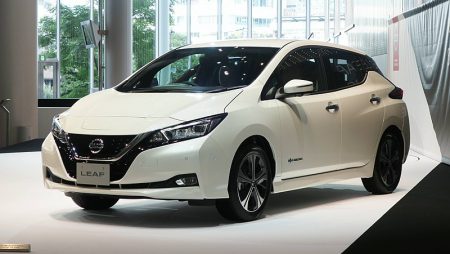Volkswagen hopes its new EV can become the new face of a brand scarred by Dieselgate – upending the Leaf in the process
Brave new world, meet same old world. Electric cars once stood alone (dear early adopter, here is a vehicle unlike any other), but they certainly don’t any more. At the launch of the new Volkswagen ID 3, potential buyers could make a shortlist of several similarly priced, similarly specified battery-powered cars. As it is, we’ve chosen just the one to pitch it against.
Volkswagen says its new zero-emissions family hatchback heralds a third generation for the company, after the eras of the Beetle and Golf.
Like the Golf, the ID 3 is joining an established class. A legend of Volkswagen history, the Golf arrived with a transverse-front-mounted petrol engine, driven front wheels and MacPherson-strut/torsion-beam suspension – specifications that were considered sufficiently ‘so what?’ that the Citroën CX beat it to the 1975 European Car of the Year award. So joining a game rather than changing it is clearly no barrier to success.
Changing it can work too, mind, as Nissan has found since launching the Leaf in 2010. Built in Sunderland and now in its second generation, it has become the world’s most successful electric car to date. It also looks like it has acted as a strong benchmark for the ID 3. Hence it’s here, as the Nissan Leaf e+ 3.Zero (but I will just stick with Leaf, if that’s okay).
The specification sheets of the new Volkswagen and the familiar Nissan exhibit the kind of closeness that you would find in any other family car twin test. Power is about 200bhp apiece; the front seats, back seats, boot space and equipment levels are competitive with each other; and the price is £35,215 (ID 3) versus £36,970 (Leaf). This test isn’t an ‘EV thing’. It’s just car meets car.

And that’s all we can decide for now, by the way. It will take 20 years for us to know for sure whether the ID 3 has firmly established its own piece of Volkswagen heritage.
It looks new, though, yes? Beetle, designed by Ferdinand Porsche, Mk1 Golf, lines by Giorgetto Guigiaro, meet Klaus Zyciora’s ID 3: attractive, slightly familiar yet also strangely not so, as if somebody has made a squeaky dog toy of a Golf in 1:1 scale. I’m told that it’s quite aerodynamic.
Underneath is the kind of EV architecture that’s becoming familiar and has tremendous flexibility (of purpose, not structure). There’s a relatively long wheelbase for this Golf-sized hatchback, with a phalanx of batteries mounted low and level between the front and rear axles.
This 1st Edition of the ID 3 has a single motor at its rear, driving its rear wheels, but the platform can host one at the front instead or as well, and fewer or more batteries.
If and when EV batteries become solid-state, want less cooling and can be packaged differently, maybe engineers will move them around a bit, but for now this is the go-to layout. It places the cells (and they’re the heaviest hardware in an EV) low, which is at least the best thing you can do with them dynamically.
There are different battery packs available on both of these cars, but this ID 3 has a usable array of 58kWh of cells (the total capacity is 62kWh). WLTP range works out at 260 miles.
The e+ version of the Leaf also arrives with a 62kWh battery pack, so the usable bit of it will be a similar amount to in the ID 3 – one reason why its WLTP range is 239 miles.
However, despite this seemingly significant disparity, we saw very little difference between the range of the two cars while they were on test; both will manage 200 miles and a bit, depending on the weather.
The range of any EV will dip in winter. Start your day with a tingly warm battery fresh from an overnight tickle and it will increase. Both of these cars have a Type 2 charger for slow charging; the ID 3 gets a CCS charger for fast charging and can accept a rate of up to 100kW. The Leaf can theoretically reach 100kW too, although it has a Chademo socket, for which most public chargers are still 50kW – and when you do find a 100kW unit, the Leaf’s air-cooled battery will stay at the fastest rate for only a short time in order that it doesn’t overheat. I think there’s a Betamax/VHS thing going on (ask your dad) with these systems and that CCS is winning. Nissan will move its future EVs to CCS in Europe.
Read more: Autocar
It’s Time to Go Green!
If you would like to know more about Solar Panels and the PowerBanx range of home battery systems, and get a free instant quote, please complete our online form:

